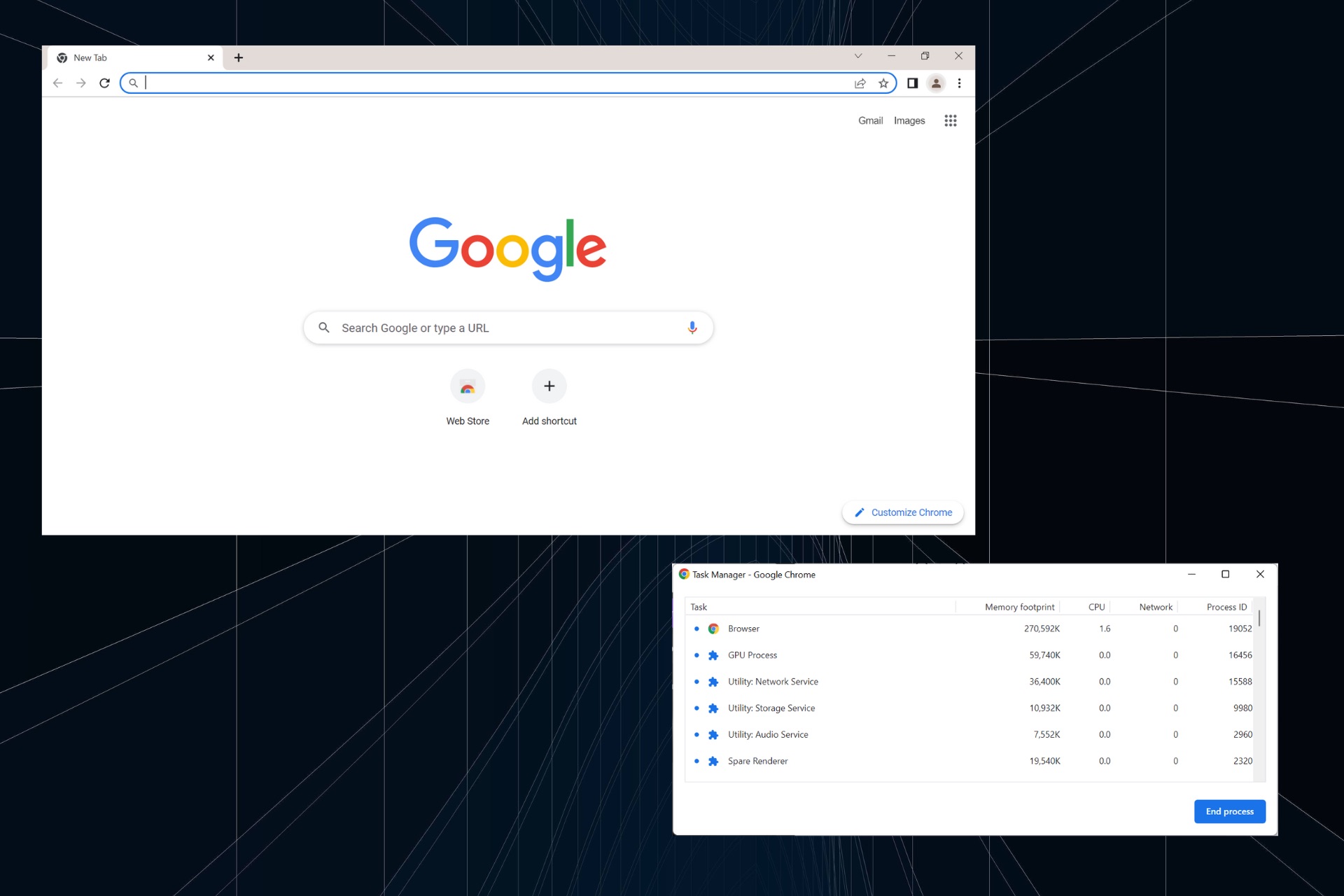Introduction
Google Chrome is one of the most popular web browsers in the world, known for its speed, simplicity, and user-friendly interface. However, despite its many advantages, users often encounter the frustrating issue of Chrome crashing unexpectedly. Whether you're in the middle of important work, streaming your favorite show, or simply browsing the web, a sudden crash can disrupt your online experience and leave you searching for answers.
Understanding the reasons behind Google Chrome crashes and learning how to address them is crucial for a seamless browsing experience. In this article, we'll delve into the common causes of Chrome crashes and provide practical solutions to help you troubleshoot and resolve these issues. By gaining insights into the potential triggers and implementing effective fixes, you can minimize the occurrence of Chrome crashes and enjoy a smoother, more reliable browsing experience.
Let's explore the underlying factors that contribute to Google Chrome crashes and discover the steps you can take to tackle this persistent issue. Whether you're a casual user or rely on Chrome for work, these insights will empower you to navigate the challenges of browser crashes and optimize your browsing experience.
Common Causes of Google Chrome Crashes
-
Excessive Browser Extensions: Chrome's extensive library of extensions offers a myriad of functionalities, but an overload of these add-ons can lead to instability and crashes. Conflicting or outdated extensions may disrupt the browser's performance, causing sudden crashes during browsing sessions.
-
Outdated Browser Version: Using an outdated version of Google Chrome can leave your browser vulnerable to bugs and performance issues. Failure to update to the latest version may result in compatibility issues with websites and web applications, leading to frequent crashes.
-
Insufficient System Resources: Running multiple tabs and resource-intensive web applications can strain your system's resources, especially if your device has limited RAM or processing power. In such cases, Chrome may become unresponsive and crash due to resource exhaustion.
-
Corrupted User Profile: Over time, the user profile associated with your Chrome browser may become corrupted, leading to erratic behavior and crashes. This can occur due to various factors, including software conflicts, unexpected shutdowns, or malware infections.
-
Incompatible Software: Certain third-party software installed on your system may conflict with Google Chrome, resulting in instability and frequent crashes. This can include antivirus programs, system optimization tools, or other applications that interfere with Chrome's processes.
-
Malware and Adware: Malicious software and adware can compromise the stability of your browser, leading to unexpected crashes and performance issues. These unwanted programs may alter browser settings, inject ads, and disrupt normal browsing functions, ultimately causing Chrome to crash.
-
Hardware Acceleration Issues: Chrome's hardware acceleration feature, designed to enhance browsing performance, may encounter compatibility issues with certain graphics drivers or hardware configurations. This can lead to crashes and display-related issues during browsing sessions.
-
Faulty Browser Settings: Incorrect or corrupted browser settings, such as misconfigured flags or experimental features, can trigger instability and crashes in Google Chrome. Modifying advanced settings without proper knowledge or inadvertently enabling experimental features may lead to unexpected browser behavior.
Understanding the common causes of Google Chrome crashes is essential for effectively addressing these issues and ensuring a smoother browsing experience. By identifying the underlying factors contributing to browser instability, users can take proactive steps to mitigate these issues and optimize their Chrome usage.
How to Fix Google Chrome Crashes
Resolving Google Chrome crashes requires a systematic approach to address the underlying causes and restore the browser's stability. By implementing the following strategies, users can effectively troubleshoot Chrome crashes and optimize their browsing experience.
1. Manage Browser Extensions
Review and manage your browser extensions by navigating to the "chrome://extensions/" URL. Disable or remove unnecessary or problematic extensions that may be contributing to Chrome crashes. Consider enabling extensions one by one to identify any specific add-ons causing instability.
2. Update Google Chrome
Ensure that your browser is running the latest version by accessing the "chrome://settings/help" URL. Chrome regularly releases updates to address security vulnerabilities, improve performance, and resolve known issues. Keeping your browser up to date can mitigate compatibility issues and reduce the likelihood of crashes.
3. Clear Browsing Data
Periodically clearing your browsing history, cache, and cookies can help eliminate corrupted data that may be impacting Chrome's performance. Access the "chrome://settings/clearBrowserData" URL to clear browsing data selectively or comprehensively based on your preferences.
4. Create a New User Profile
If you suspect that your current user profile is corrupted, creating a new profile can provide a fresh start. Access the "chrome://settings/people" URL to add a new user profile and transfer your bookmarks and essential data to the new profile. This can help isolate and address profile-related issues causing Chrome crashes.
5. Check for Malware
Run a thorough scan using reputable antivirus or anti-malware software to detect and remove any malicious programs that may be affecting Chrome's stability. Additionally, consider using Chrome's built-in cleanup tool by visiting the "chrome://settings/reset" URL to remove unwanted software and restore browser settings to their default state.
6. Disable Hardware Acceleration
Temporarily disable hardware acceleration in Chrome settings by accessing the "chrome://settings/system" URL and toggling off the "Use hardware acceleration when available" option. This can help troubleshoot crashes related to graphics hardware or driver compatibility issues.
7. Reset Chrome Settings
If you suspect that misconfigured browser settings are contributing to crashes, consider resetting Chrome settings to their default state. Access the "chrome://settings/reset" URL and choose the "Restore settings to their original defaults" option to reset browser settings while retaining essential information such as bookmarks and saved passwords.
By implementing these proactive measures, users can effectively address Google Chrome crashes and enhance the stability of their browsing experience. It's important to approach troubleshooting systematically, identifying and addressing potential triggers to minimize the occurrence of unexpected browser crashes.
Conclusion
In conclusion, addressing Google Chrome crashes requires a combination of proactive maintenance, troubleshooting, and a deeper understanding of the potential triggers behind browser instability. By recognizing the common causes of Chrome crashes, users can navigate these challenges with greater confidence and take targeted steps to optimize their browsing experience.
It's essential to emphasize the significance of managing browser extensions, as these add-ons play a pivotal role in Chrome's functionality. By carefully evaluating and selectively enabling extensions, users can minimize conflicts and reduce the likelihood of crashes. Additionally, staying vigilant about updating Google Chrome to the latest version is crucial for leveraging performance improvements and security patches, thereby mitigating compatibility issues that may lead to unexpected crashes.
Clearing browsing data at regular intervals serves as a proactive measure to eliminate corrupted data that could impact Chrome's stability. This simple yet effective practice can contribute to a smoother browsing experience and reduce the risk of crashes caused by accumulated browsing data. Furthermore, creating a new user profile can provide a fresh start and isolate potential profile-related issues, offering a viable solution for users experiencing persistent crashes.
The proactive approach to addressing malware and adware through comprehensive scans and cleanup tools is paramount in safeguarding Chrome's stability. By fortifying the browser's defenses against malicious programs, users can minimize the risk of unexpected crashes and maintain a secure browsing environment. Temporarily disabling hardware acceleration and resetting Chrome settings to their default state are additional troubleshooting strategies that can help identify and resolve underlying issues contributing to browser crashes.
By embracing these proactive measures and troubleshooting strategies, users can empower themselves to effectively address Google Chrome crashes and optimize their browsing experience. It's important to approach troubleshooting with patience and diligence, recognizing that each step taken contributes to a more stable and reliable browsing environment.
In essence, understanding the common causes of Google Chrome crashes and implementing targeted solutions equips users with the knowledge and tools to navigate browser instability effectively. By prioritizing proactive maintenance, regular updates, and strategic troubleshooting, users can minimize the impact of unexpected crashes and enjoy a seamless browsing experience with Google Chrome.

























